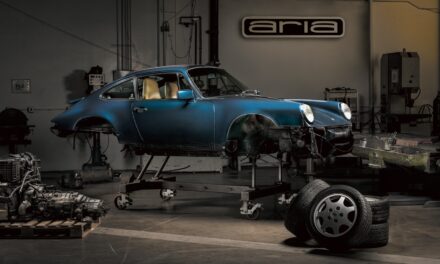Covestro, one of the world’s largest polymer producers, recently announced a new partnership with Scotland-based holographic display technology provider Ceres Holographics to commercialize Covestro’s Bayfol HX photopolymer films for mobility and commercial vehicle applications.
The film is transparent and thin, featuring a light-sensitive, self-developing photopolymer. It is used for the recording of highly efficient volume holographic optical elements (vHOE). The goal of the partnership, which was announced after previous extensive cooperation between the two companies, is to create transparent line-of-sight holographic display solutions for drivers and passengers. Potential uses include head-up displays, infotainment, communications, and advertising.
According to Covestro, such holographic solutions are already in demand from automotive OEMs.
“Ceres Holographics has been testing how to harness the unique properties of our Bayfol HX film for holographic transparent display applications for years, and has produced outstanding results,” said Yuen-Ling Lok, Head of Commercial Operations, Holographic LightGuiding at Covestro. “We intend to continue working with our partner in the emerging supply chain to commercialize this film in the mobility segment. The project is yet another example of how customers are increasingly asking for specialized solutions. We are happy to support them in this journey.”
Ceres Holographics said its holographic transparent display technology has already been successfully demonstrated in OEM prototypes, enabling full-color display of information on the front, side, and rear car windows. Ceres is currently involved in go-to-market programs with several global commercial-vehicle and automotive OEMs targeting production dates between 2022 and 2025.
“Our partnership with Covestro has enabled us to respond to the strong demand for cost-effective and easy-to-implement transparent display solutions in the automotive and commercial vehicle sectors,” said Andy Travers, CEO of Ceres Holographics. “We specialize in the design, mastering, and reproduction of thin-film HOEs. Our digitally mastered HOEs feature full color and a wide vision field, yielding precision-engineered optical performance and functionality in windscreens and windows at prices that the market demands.”
The Ceres Holographics transparent display product is already being used as an ultra-compact cluster/console replacement display system, which helps keep drivers’ attention on the road.
In October, Ceres Holographics and Texas Instruments demonstrated the industry’s first automotive-qualified holographic-enabled transparent display solution at Vehicles Displays Detroit, a virtual event hosted by the Society of Information Display (SID). The in-plane solution combines Texas Instrument’s DLP technology and Ceres Holographics’ digitally mastered HOE to display information on any type of transparent surface, including instrument cluster, navigation, and infotainment displays on the driving-facing windshield of vehicles in a safe, non-distractive way.
The solution enables very large front windscreen displays of up to 15 x 5 degrees field-of-view or greater using a DLP projector of less than 1 L (61 in3) in volume. It produces bright, full-color displays, supporting 12k cd/m2 or higher brightness levels along with highly saturated colors. Critical driving information is clearly visible even when wearing polarized sunglasses. The demonstration shows a significant advantage of the Ceres’ digitally mastered in-plane solution—the ability to precision program every pixel to an arbitrary light-reflecting geometry that supports on- and off-axis projection.
From an optical-design perspective, this means the projector’s angle of incidence does not need to equal the angle of reflection. In the demonstration, the projector’s illumination angle is normal to the film but the angle of reflection to the eye box is at 48 degrees. Off-axis projection allows for flexibility in projector placement, which is especially beneficial for projectors placed in highly constrained spaces like a vehicle’s dash or supporting highly raked windscreen angles such as the near-vertical windscreen angles found in commercial trucks.



























































































